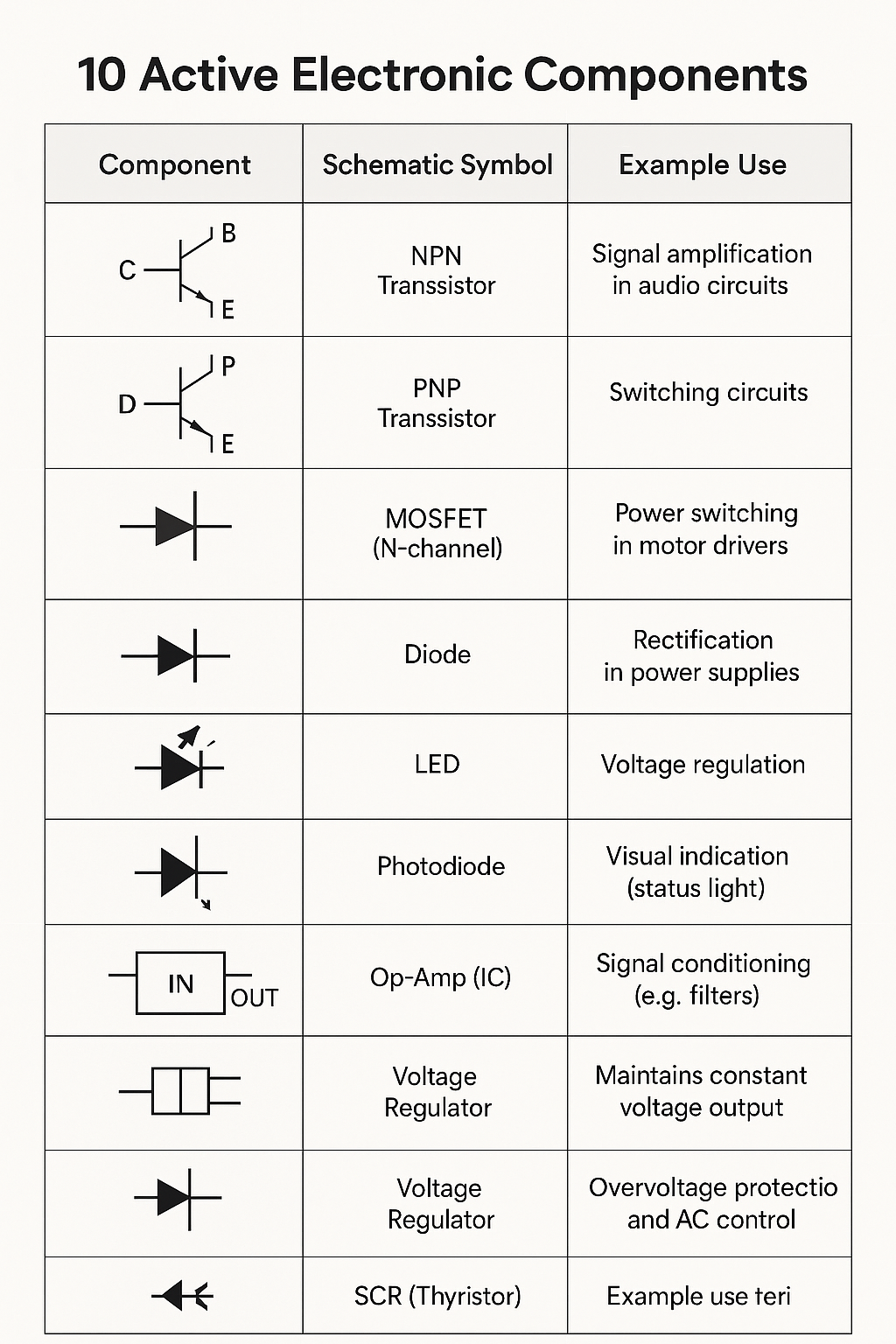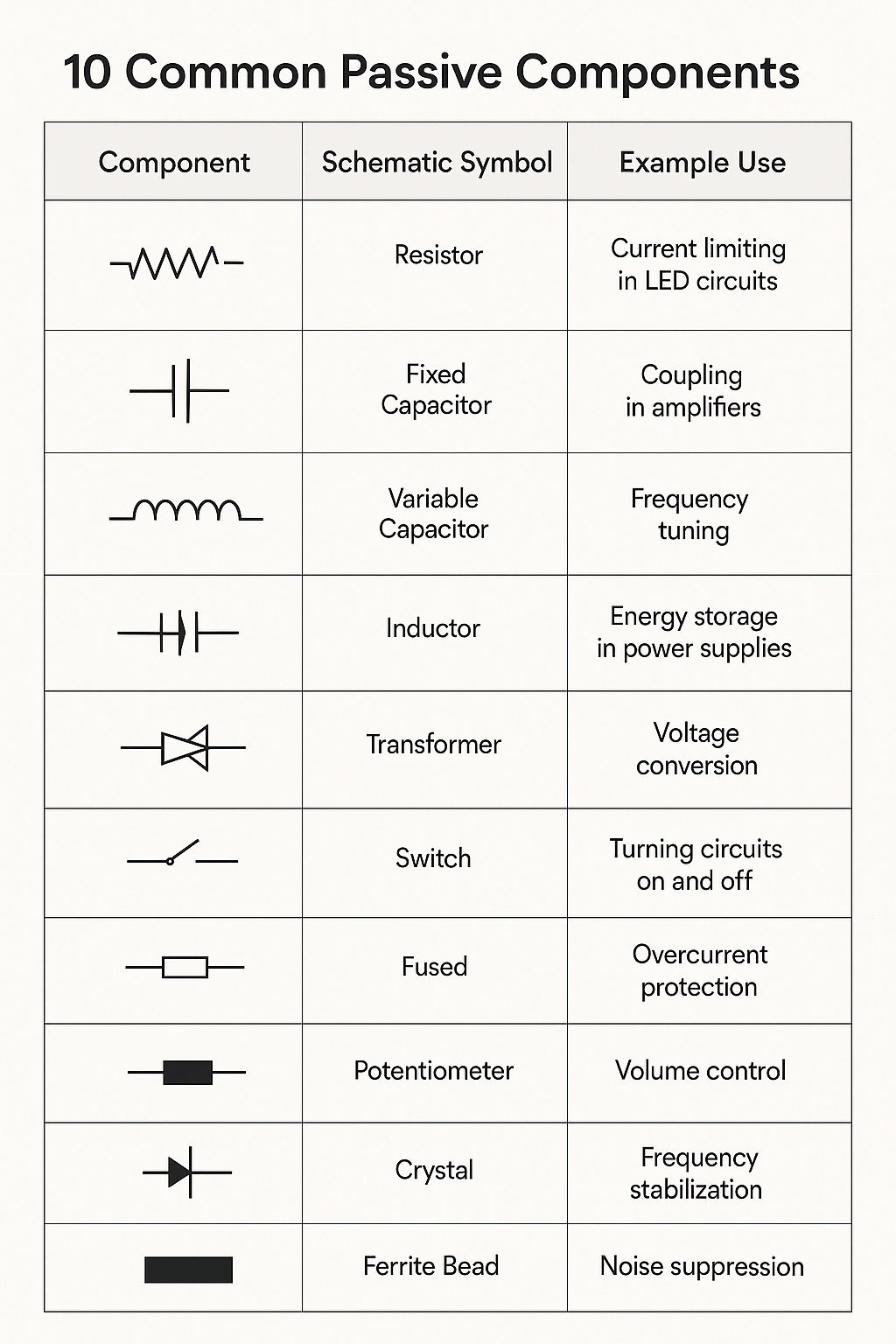| .. | ||
| active_components_symbols.png | ||
| n_channel_h-bridge_motorcontrol.png | ||
| passive_components_symbols.png | ||
| Readme.md | ||
Difference Between Active and Passive Components in Electronics
🔋 Active Components
Active components are electronic devices that can amplify signals, control current, or produce energy. They require an external power source to function.
Examples:
- Transistors – Amplify or switch electronic signals
- Diodes (including LEDs) – Allow current in one direction, used in rectification
- Integrated Circuits (ICs) – Contain multiple active and passive components
Key Features:
- Require external power to operate
- Can inject power into a circuit
- Can control the flow of electricity
- Used for amplification, signal processing, and switching
🔌 Passive Components
Passive components cannot amplify or generate power. They only respond to the electrical signals applied to them.
Examples:
- Resistors – Limit current flow
- Capacitors – Store and release energy as an electric field
- Inductors – Store energy in a magnetic field
- Transformers – Transfer energy between circuits via magnetic fields
Key Features:
- Do not require external power to operate
- Cannot amplify signals
- Used for filtering, energy storage, tuning, and impedance matching
⚖️ Quick Analogy
- Passive Component: Like a valve or container — it regulates or stores energy.
- Active Component: Like a pump — it can add energy and control the system dynamically.

